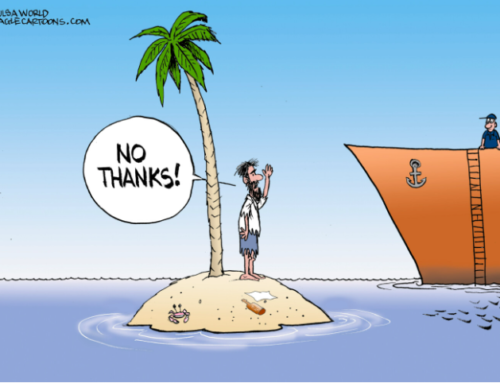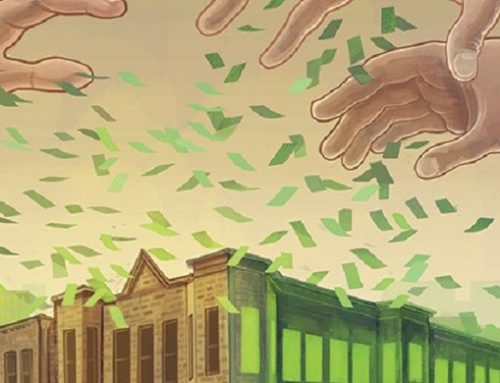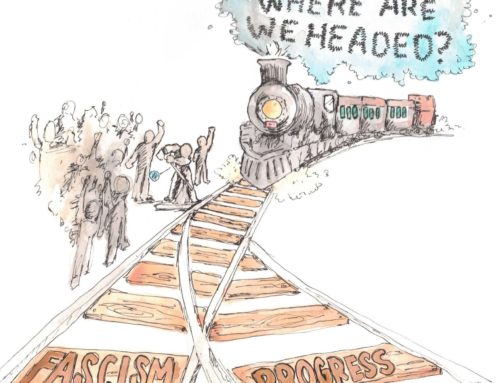by Anu Muhammad
We have witnessed the worst industrial disaster in Bangladesh, one beyond any wild calculation and more horrifying than we could even imagine. On April 24, 2013 another garment factory, Rana Plaza in Savar near the capital city of Bangladesh, Dhaka, suddenly turned into a mass grave. The death toll continues to climb and, rising quickly after a few hundred, has already passed 1000, many are still missing. I don’t think anybody has the capacity to capture the extent of grief, heartache, discontent, and anger this horror has created.
The collapse of this eight-storey garment factory took place only 5 months after another garment fire disaster, Tazreen Fashions that killed 124. Rana Plaza, the multi-storied building, was built on low land and housed at least five garment factories. This land was grabbed by a ruling party thug from a religious minority family, was quickly built upon without proper design, permission, or many of the necessary materials. In every phase of construction, this building grew with deviance and corruption. Sohel Rana, the owner of the building, a local leader of the ruling party, has been known as drug smuggler and accused of many crimes including murder (for more on him, http://www.bbc.co.uk/news/world-asia-22366454).
With some of the world’s lowest wages and no job security for its workers, the industry maintains the highest profit. The cruel death of hundreds of workers is in fact a reflection of the cruel lives millions face everyday, yet seems to only weaken the value we put on human life. However, the sorrows and suffering of the workers and their loved ones do not begin with these ‘accidental’ building fires and collapses.
The system, profiting from the repression, insecurity, and deprivation of workers, created the risk and vulnerability that preceded Spectrum, Smart, Tazreen and Rana. Now the surviving workers, along with the survivors of the dead, continue to face a world of suffering. They will not only share their stories for years to come, but also likely face these realities as many must return to factory work. Unlimited greed and political power, along with global inhuman system of injustice, created monsters that actually killed thousand workers, and will continue to haunt a nation.
Who are responsible?
Inhuman working conditions, low wages, verbal and physical abuse, irregular or non-payment of dues, and the inability to organize are common in most of the factories supplying world-class garments. Additionally, most of the so-called ‘accidents’ since 1990 reveal the faulty structure of factory buildings including weak electrical wiring, lack of fire exits and fire alarms, narrow stair and exit paths, poor foundation, and locked doors. These issues are enabled by inadequate or non-existent regulation and monitoring.
The parties responsible for these death traps include (i) owners of factories, buildings and BGMEA (ii) relevant government agencies and (iii) international buyers and retailers.
Firstly, owners of the factories have the primary responsibility of ensuring basic safety for workers. If something fails to meet standards, owners must be held accountable to make the necessary improvements. Instead, as no owner has ever faced impartial legal ramification for their wrong doings, it seems that they have a free hand to do whatever they like. Only after reaching record death tolls and media attention in the wake of Rana collapse, the government was forced by strong public discontent to take action.
As an umbrella organization of garment owners, Bangladesh Garment Manufacturers and Exporters Association (BGMEA) has the responsibility of monitoring compliance and advocating for high industrial standards. Instead, this organization works as the collective muscle of owners to protect itself from the law. Represented by ministers, MPs, main opposition parties, police, and media, the BGMEA owns both money and power. With their holes of sins always covered, the fate of Rana Plaza merely brings the problematic interrelations of the BGMEA to light.
Secondly, the government and its relevant agencies have the authority and obligation to ensure the accountability of factory and building owners and mandate improvements. There are ministries, directorates, and divisions within government that give permission, monitor, and can take action within the industry. But in reality, Rana, by the support of present and past ruling parties, could grab land, got approval for the building, erected three additional floors without permission, and made them available to factories. To make matters worse, it is alleged that key police and civil administrators were under his payroll. Despite the responsibility of government entities, the case of Rana proves how the actual foundation of the industry is weakened.
Thirdly, international buyers and retailers are supposed to guarantee that the factories from which they source are compliant. We know delegates from buyers often visit factories, and it is also well known that the owners provide a wide range of entertainment to please them. Therefore, we mustn’t tolerate buyers attempt to act unknowingly to the realities on the factory floor. There is no doubt that their thirst for increasing profit, and pressure for cheaper and faster supply create bad working conditions and risks like in the cases of Tazreen and Rana.
While many are involved in this process, it is the workers who face the horrors while others quickly profit. Accordingly, the Government, BGMEA, and buyers who fail to secure basic standards in the factories must bear the responsibility of those consequences. The question remains, since they are the beneficiaries of the existing system is their failure to comply a conscious wrongdoing?
Why they do wrong?
In one word the answer is: money, madness for more and more profit. There are a number of groups in Bangladesh and in many western countries who are getting fatter over the value created by workers of garment industry in Bangladesh.
In one estimate we find that if any garment is sold at US$14 at a supermarket in NY, Toronto, Sydney or London 60% of that value is usurped by international buyers and retailers. Governments of western countries also earn a significant cut as vat or sales tax. In other words, the majority of profit is grabbed by those who have no role in producing the good. Out of the remaining 40%, the imported and local materials together with the establishment costs take nearly 35%. Finally, less than only 1% is left for workers. Therefore, it is no surprise that the present minimum wage is much lower than a stipulated living wage and also below the poverty level of income.
When a polo shirt is sold in Canada at US$14, costs in Bangladesh is distributed as follows (all in US$):
Materials, finishing: 3.69 (26.35%)
Shipping, Tariff: 1.03 (7.36%)
Factory margin: 0.58 (4.14%)
Agent: 0.18 (1.28%)
Establishment cost: 0.07 (0.5%)
Worker: 0.12 (0.85%)
Purchase price from Bangladesh: 5.67 (40.5%).
(From a study by Orurek, Canada, 2011
Source: http://www.prothom-alo.com/detail/date/2013-05-04/news/349443)
North American retailers prefer Bangladeshi products over US ones, because it gives them much higher profit and consumers a cheaper product. Why? The table below gives the answer.
Costs of a T-Shirt (US$)
Costs US Bangladesh
Materials 5 3.30
Industrial laundry 0.75 0.20
Labour 7.47 0.22
Total 13.22 4.70
Institute for global labour and human rights
http://edition.cnn.com/2013/05/02/world/asia/bangladesh-us-tshirt/index.html
The table shows that, when a T-shirt costs US$4.70 in Bangladesh, it costs US$13.22 in the US. In costs of materials, both countries differ little. Material costs for the US is US$5, and for Bangladesh it is 3.30. When it comes to the labour cost, the distinction is revealed. While the cost of labour for a T-shirt is US$0.22 in Bangladesh, it is US$7.47 in the USA, more than 33 times than in Bangladesh.
Since global garment market is a buyers’ market, i.e., few buyers many sellers, buyers actually determine the price. In the case of garments, buyers and brands become the price maker and it is they who insist on lowering the price even more. A recent report reveals a case, ‘A Dhaka-based manufacture exports cotton long sleeve tops for a Spanish buyer for decades. The buyer comes back every year with repeat order, lowering the price further. Though manufacturing cost… doubled within this span of eight years, the price was pushed down to $2.40 a piece this year from $3.40 in 2005.’
(http://www.thedailystar.net/beta2/news/secret-cuts/)
Factories often accept abnormally low prices in an effort to attract buyers and grab orders. In turn, and in order to maintain a profit rate, low cost suppliers often avoid safety measures and reduce workers real wage (through increasing working hour, cutting their benefits, not spending on other facilities). This cost cutting behavior deepens the deprivation and vulnerability of workers.
The structural frame
In today’s globalized capitalism, which has redefined traditional labour relations through out the world, forces global south or peripheral countries to act only as sources of cheap labour. Like in many other countries, structural adjustment programmes caused many big factories to close in Bangladesh. Deindustrialization put millions out of work while, due to favourable global and local policies and incentives, export-oriented industries expanded very fast. Low wage, low security employment became the main livelihood of surplus labour, especially for young women. (For more discussion on the perspective, see, http://www.academia.edu/853076/Wealth_and_Deprivation_Ready-made_Garments_Industry_in_Bangladesh)
Although this ‘export or perish’ model has been hailed by corporate economics for many years, the model has become a double-edged sword for peripheral economies in many ways.
Firstly, terms of trade often work against these countries. The value of Bangladeshi exported garments, for instance, compared to that of imported items from centre economies is always failing. In other words, the country must sell more of its items to import the same amount of goods (Government of Bangladesh, Bangladesh Economic Review, 2012). In order to keep up with its export, the country has to take measures like artificial depreciation of its own currency that inevitably hurt other areas of the economy.
Secondly, the fates of export-oriented economies are dependent by centre economies. Financial crisis, rise of unemployment in those economies, tariff and non-tariff barriers, and political manipulation keep countries like Bangladesh under constant threat. Moreover, in many ways the importer countries, especially the USA, regularly use export dependence of Bangladesh as a tool to bargain for other privilege.
Thirdly, about 60 to 80 percent of the sales value of garments in the retailer market goes to the international buyers and retailers. Retailers’ aim is two-fold, (i) keeping price as low as possible; (ii) increasing their profit at the highest possible level. In order to satisfy these two objectives local owners make the whole industry vulnerable through cost cutting behavior, turning factory into mass graves.
US GSP: A case of blackmail
US administration has been putting pressure on Bangladesh by threatening to withdraw of the Generalized System of Preferences (GSP) ‘for garments’. The United States Trade Representatives (USTR) held public hearing on the matter on March 28, 2013. Centre for Policy Dialogue (CPD), a research organization in Bangladesh, made a submission to the hearing. It was correctly pointed out in the submission that, ‘this (garment) sector is not covered under the US-GSP scheme. Therefore, the issue of ‘withdrawal, suspension or limitation’ concerns a sector that does not, as a matter of fact, enjoy any preferential treatment in the US market.’ Moreover Bangladesh pays more in tariff compared to many other countries, ‘unlike African and Caribbean Basin LDCs, Bangladesh does not get duty-free access for its apparel products….’ (http://www.cpd.org.bd/html/US-GSP_hearing.asp)
As noted at a US hearing (New Age, 25.11.09), the US’ import tariff revenue from Bangladesh in 2008 was 4 times higher than its ‘aid’ to the country. Since then, according to the Ministry of Finance of Bangladesh, no bilateral aid from the US was reported. Meanwhile, Bangladesh has been paying a significant amount to the US treasury every year. The import duties on Bangladesh’s apparel exported to the US in 2012 were equivalent to about $750 million (incidentally this is several times more than the US annual bilateral ‘aid’ to Bangladesh in many years) with, according to the CPD submission, ‘apparel items facing average tariff of 15 percent at US customs points. Research shows that duty-free access will significantly raise Bangladesh’s competitiveness in the US market and will also eliminate intra-LDC disparity that now exists because of African Growth and Opportunity Act (AGOA) and Caribbean Basin Initiative (CBI). The US retailers and consumers will also benefit as duty-free access will allow import at lower price.’
According to Oxfam USA, an average tariff rate on imports into the US is 1.7%. France, UK and Saudi Arabia pay less than 1%. But for Bangladesh it is on average 15%. Bangladesh pays nearly 60% of all the tariff revenue by the US collected from the LDCs. Even International Monetary Fund (IMF) admits that, ‘poor countries like Bangladesh—face the highest effective tariffs, on average, four or five times those faced by the richest economies’ in the USA. (http://www.imf.org/external/pubs/ft/fandd/2002/09/smith.htm)
Therefore if the US accepts WTO principles and stop discriminating, Bangladesh would have more leverage to incentivize change within the industry. On the contrary, the US administration threatens to withdraw GSP facility, not because it would create genuine change for workers but rather, but to gain advantage in other areas including signing TICFA (Trade and Investment Cooperation Framework Agreement), or more unequal deals to give benefit to the US oil companies.
Conclusion
Rana Plaza collapse has exposed a global-local system of greed, exploitation, negligence and cruelty. The process of primitive capital accumulation has given birth to the super rich class including most of the garment owners in Bangladesh, and the global capital accumulation process acts no different.
However the industry’s inherent disconnect allows factories owners, BGMEA, and global retailers to skirt responsibility, even after the murder of thousands. Today, the rubble of failed infrastructure is draped with the labels and names of those responsible only to prove a failed system of accountability in global scale.
We need to stand beside the millions of workers (1) To ensure exemplary punishment to those who are responsible (2) To ensure payment of compensation to the families of the killed, not less than their lifetime (average another 40 years) possible earning. (3) To form an independent commission to review and investigate into the sector and to prepare comprehensive plan to ensure security and sustainability of the sector. (4) To fix national minimum wage at living wage level and to work for establishing a global minimum wage. (5) To ensure the right to organize is upheld. (6) To constitute a regulatory body to monitor global chain and to take necessary steps to remove irregularities and workers insecurity.
Finally, the garment industry must be confronted within its global context. After all, when workers are victims of a global, blood-thirsty system where vampires rule the world, a global alliance of resistance is desperately needed.
————
Anu Muhammad
Professor, Department of Economics,
Jahngirnagar University, Savar, Dhaka, Bangladesh
email: anujuniv@gmail.com







[…] One Struggle: Why Factories Turn into Killing Fields […]